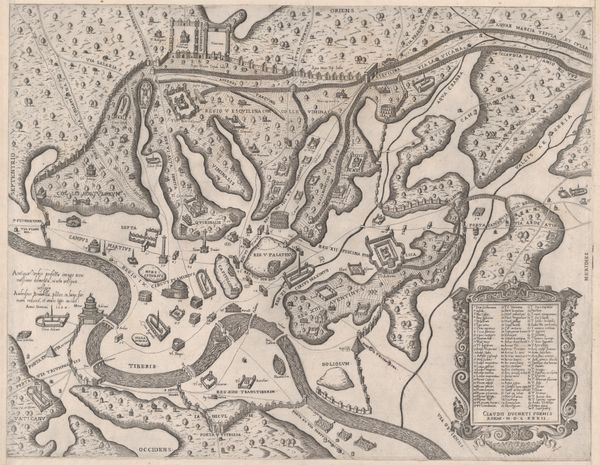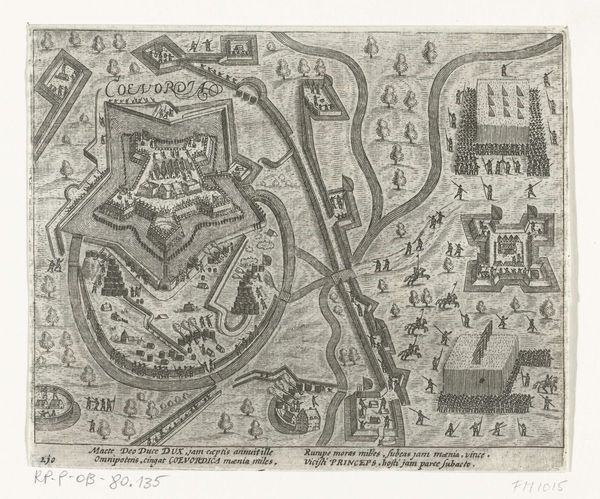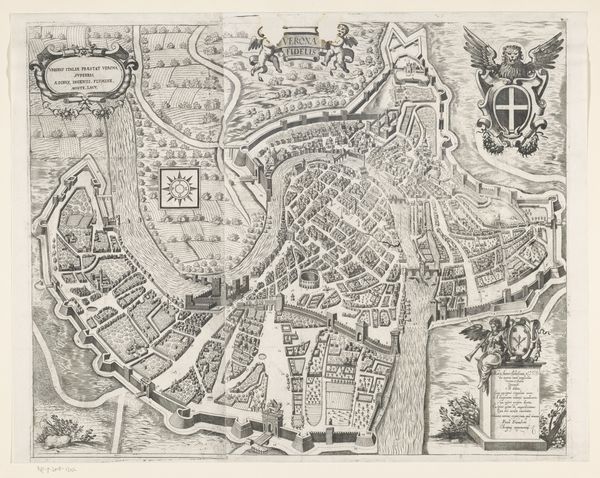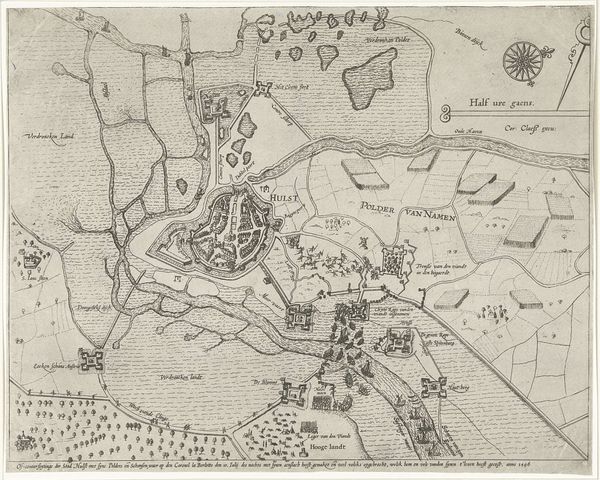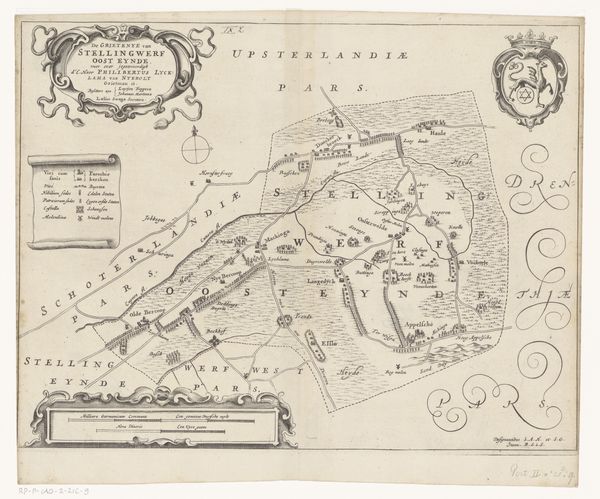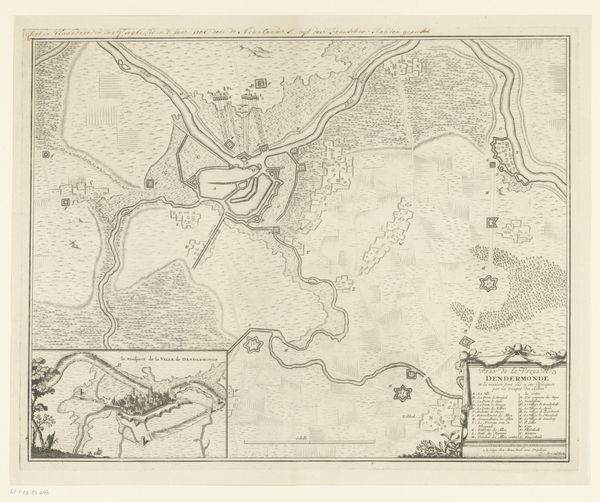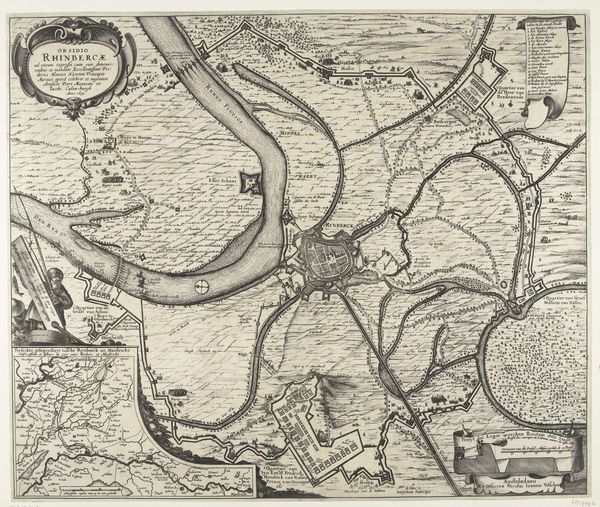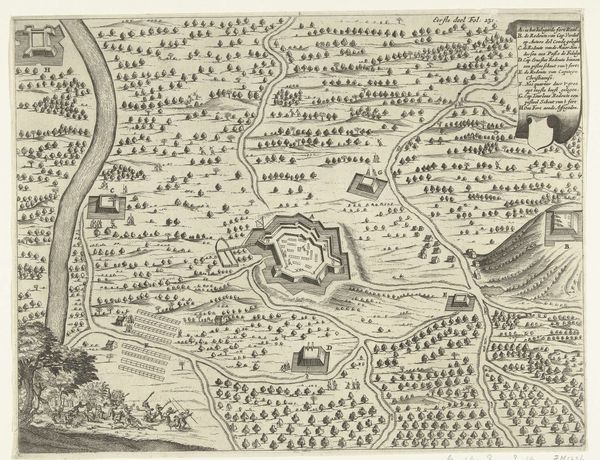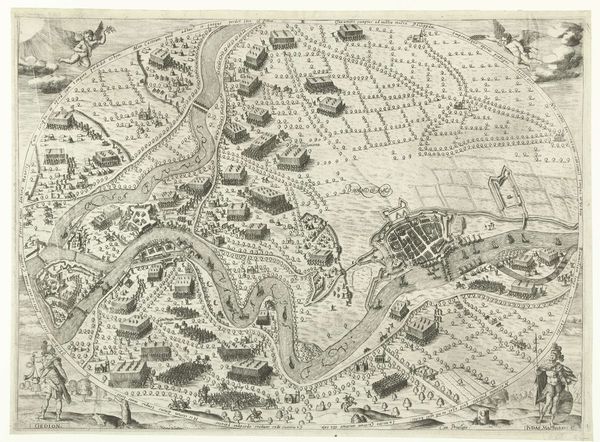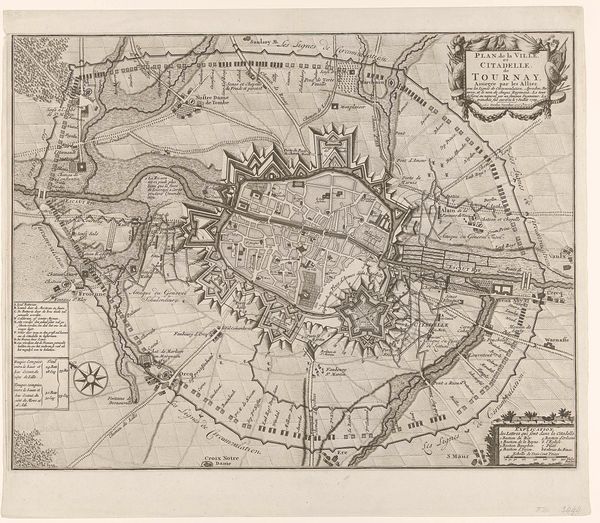
Speculum Romanae Magnificentiae: Ancient Rome and its Hills, from the West 1573
0:00
0:00
drawing, print, etching, ink
#
drawing
#
pen drawing
# print
#
etching
#
11_renaissance
#
ink
#
cityscape
#
history-painting
#
italian-renaissance
Dimensions: sheet: 20 1/2 x 26 9/16 in. (52 x 67.4 cm) plate: 18 5/16 x 23 11/16 in. (46.5 x 60.1 cm)
Copyright: Public Domain
Curator: Here we have Étienne Dupérac's etching from 1573, "Speculum Romanae Magnificentiae: Ancient Rome and its Hills, from the West". Editor: Oh, what an absolutely fascinating document! The detail pulls you right in. There's a peculiar, melancholic air to it, don't you think? Like looking at the ghost of a once vibrant civilization. Curator: Indeed. What intrigues me is how the technique itself conveys the material reality of producing such an image in the late Renaissance. It's not just ink on paper. Editor: Exactly. Dupérac used etching to give this city plan a particular feel. Imagine him, in his studio, carefully layering acid, manipulating the copper plate... it’s almost sculptural, isn’t it? The act of repeatedly biting into the metal echoes the ongoing transformations of the city itself. Curator: Absolutely, etching enabled wider distribution, a proto-mass production if you will. This "mirror of Roman magnificence," as the title suggests, speaks of a deep curiosity with both ancient power and present capabilities, highlighting the era’s aspirations and available resources. Editor: Yes, and to return to my earlier thought, I think you put your finger on the very element that struck me: I see melancholy, as though, beneath the show of the city and power of man, lies a reflection upon their inevitable diminishment. I also see the ambition embedded in its making, almost an anxiety. Curator: And what a painstaking process. Imagine the labor. Think of the availability of materials at the time! This required trade routes, skilled artisans...an entire network is woven into this one image. Editor: That interplay—the tension between Rome’s glorious past, Dupérac’s making of a permanent, reproducible document, and my awareness of its inevitable degradation. It's kind of glorious, right? Curator: Indeed, reflecting on Rome reminds us that all is temporary. Perhaps the power of this etching, and others from the "Speculum" series, lay precisely in their function as a *memento mori* of architectural ambitions and their material realities.
Comments
No comments
Be the first to comment and join the conversation on the ultimate creative platform.
